

Issue Summary:
- A 1996 or later Dodge or Jeep truck using an RE-series RWD transmission behind a gasoline engine can exhibit a chronic code P1763 – “governor pressure sensor volts too high” – causing the PCM to place the transmission into third-gear failsafe.
- Shift-solenoid, band-apply and ground-circuit-relay codes are stored in 1990-93 Isuzu Trooper and Rodeo. Shift-solenoid, band-apply and shorted-to-ground or shorted-to-power codes are stored in 1994-95 Isuzu Trooper, Rodeo and Honda Passport, resulting in limp mode.


Any 1996 or later Dodge or Jeep truck using an RE-series RWD transmission behind a gasoline engine can exhibit a chronic code P1763 – “governor pressure sensor volts too high” – causing the PCM to place the transmission into third-gear failsafe. The customer also may complain of a loss of engine power. The internal wiring harness, solenoids and sensor may have been replaced already in an attempt to resolve the code.

Cause 1: One cause could be that the ground circuit for the governor-pressure sensor (see figures 1 and 2) has been compromised:
- Faulty governor-pressure sensor
- Faulty battery-temperature sensor
- Faulty heated oxygen sensor(s)
- Faulty wiring, splices, other shared sensors or the PCM.
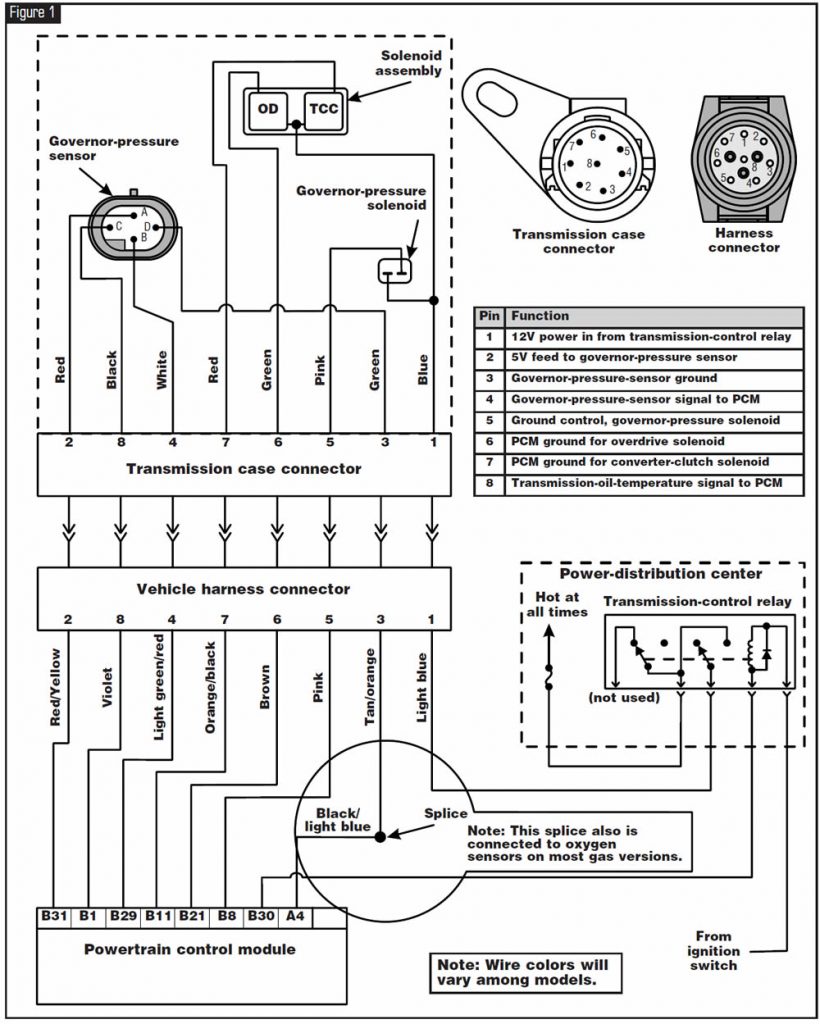
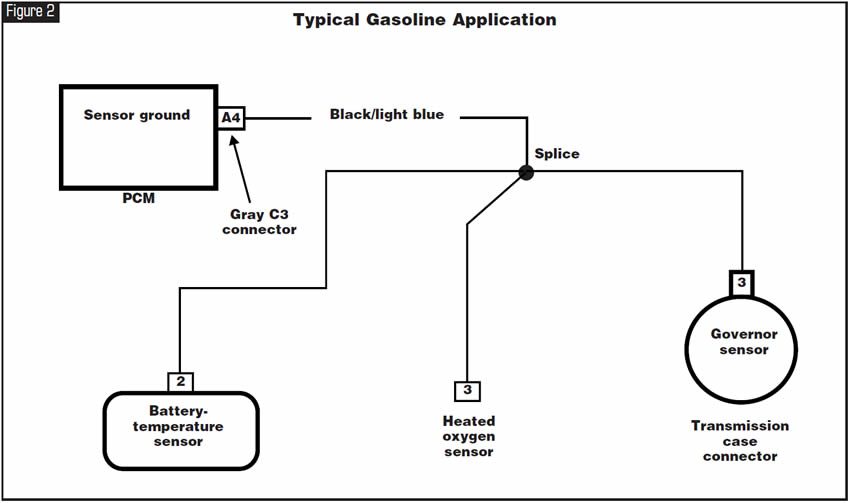
Cause 2: Another cause could be that line pressure is running above factory specification. This could be the result of a valve-body modification or a valve-body malfunction.
Cause 3: A malfunctioning alternator producing voltage spikes or high charging voltage would be another consideration.

Correction 1: Since the governor-pressure sensor shares a ground circuit with various other sensors including the battery-temperature sensor and the heated oxygen sensor, other codes may be present with P1763, such as P1492 “Battery Temperature Sensor Volts Too High.” A P1762 “Governor Sensor Offset volts or drift too low or too high” or a P1757 “Governor pressure above 3 psi at 0 mph” also may be present. But of all the possibilities listed in cause No. 1, malfunctioning heated oxygen sensors are the most-common cause of a compromised shared ground path for the governor-pressure sensor.
You can make a quick check by simply clearing the code, unplugging both the upstream and downstream oxygen sensors and taking the truck for a road test. If the code does not return, run the vehicle with the sensors plugged in one at a time to determine which oxygen sensor is causing the code, and replace the faulty sensor. If this quick test proves that the heated oxygen sensors are not the cause of any governor-pressure-sensor codes, you will need to acquire a wiring schematic specific to the vehicle you’re working on and inspect every sensor sharing the governor sensor’s ground path.
Correction 2: A quick method to determine whether code P1763 is being produced as a result of high line pressure is to first clear the code or codes. Drive the vehicle with the brake applied sufficiently to activate the brake-switch signal, which will prevent application of the torque-converter clutch. If P1763 does not return, release the brake and allow the converter clutch to engage. If the code is generated immediately after application of the converter clutch, line pressure higher than factory specifications is the cause. Many times this is due to some form of valve-body modification in an attempt to firm up shifts and converter-clutch apply.
As a corrective modification you may find that a 150-ohm 1/4-watt resistor (Radio Shack part# 271-1312) has been installed into the wiring harness near PCM “B-C2” white connector terminal 29 (see Figure 3). This resistor acts as a voltage divider and has proved to work well.
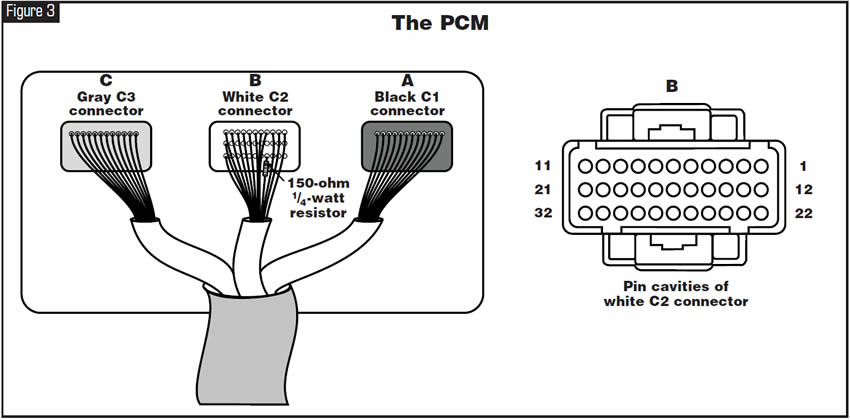
NOTE: Code P1763 sets when the PCM sees 4.89 volts or higher on the governor-pressure-sensor circuit for eight seconds or more. If this was caused by high line pressure, it indicates that governor pressure was 90-96 psi or higher with the transmission in drive.
The computer controls the governor-pressure solenoid to provide governor pressure relative to road speed (except in diesel applications). When this solenoid is off it allows full pressure into the governor circuit. To provide 0 psi at 0 mph it needs to be fully energized. As vehicle speed increases the computer slowly turns the solenoid off in inverse proportion to road speed. Once the vehicle is in fourth gear and the converter clutch is commanded on, the solenoid is turned completely off. Since line pressure is being supplied to the governor solenoid, when the computer turns it off, nearly all pressure feeding the solenoid now enters the governor circuit. Should line pressure be above 90 psi, so will pressure in the governor circuit, and after eight seconds code P1763 sets.
Correction 3: If the alternator is suspect, clear the codes and road-test the vehicle with the alternator disconnected from the circuit. If the code does not return, the alternator should be replaced. But if the code does return, you will need to review cause and correction No. 1 before considering the PCM defective.




A shift-solenoid code (17, 25, 26 or 28), band-apply-solenoid code (34 or 35) and a ground-circuit-relay code (43) are stored in 1990-93 Isuzu Trooper and Rodeo.
A shift-solenoid code (31, 32, 41 or 42), band-apply-solenoid code (34 or 44), and shorted-to-ground or shorted-to-power code (46) are stored in 1994-95 Isuzu Trooper, Rodeo and Honda Passport, resulting in limp mode.
In some instances a newly installed computer is destroyed instantly when the ignition is turned on.

There are various causes for these complaints, such as faulty solenoids, faulty case connector, internal or external wiring concerns, loss of ground, or system-voltage problems such as overcharging.
Another main concern is to identify which of the two different control systems used in these vehicles you are working with and how they operate when the need for diagnostics for these codes arises, since the two systems function in opposite manners.

The first step is to identify which system the vehicle is using. 1990-93 Isuzu Trooper and Rodeo use a Bosch computer-control system (see Figure 4). 1994-95 Isuzu Trooper, Rodeo and Honda Passport use a GM Delco computer-control system (see Figure 5).
The Bosch computers have a two-letter ID, as shown in Figure 4, and the GM Delco computers have a four-letter ID, as shown in Figure 5.
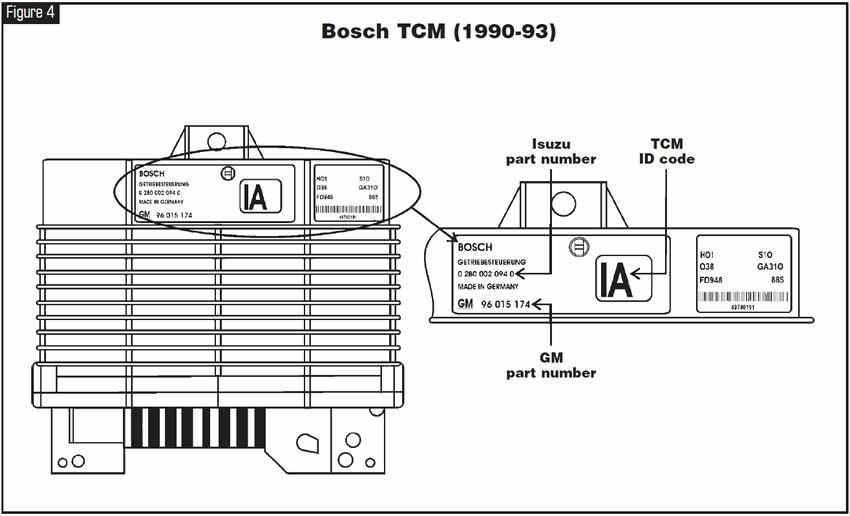
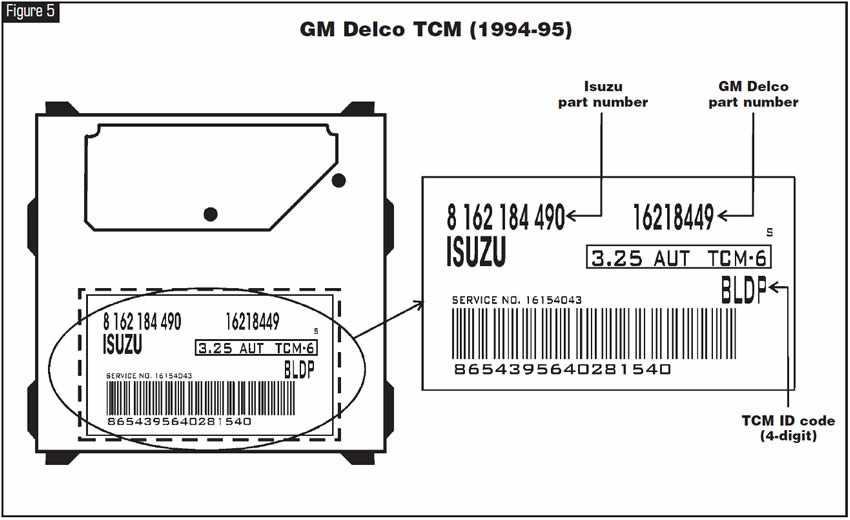
You can use the chart in Figure 6 to match the TCM to the vehicle application correctly.
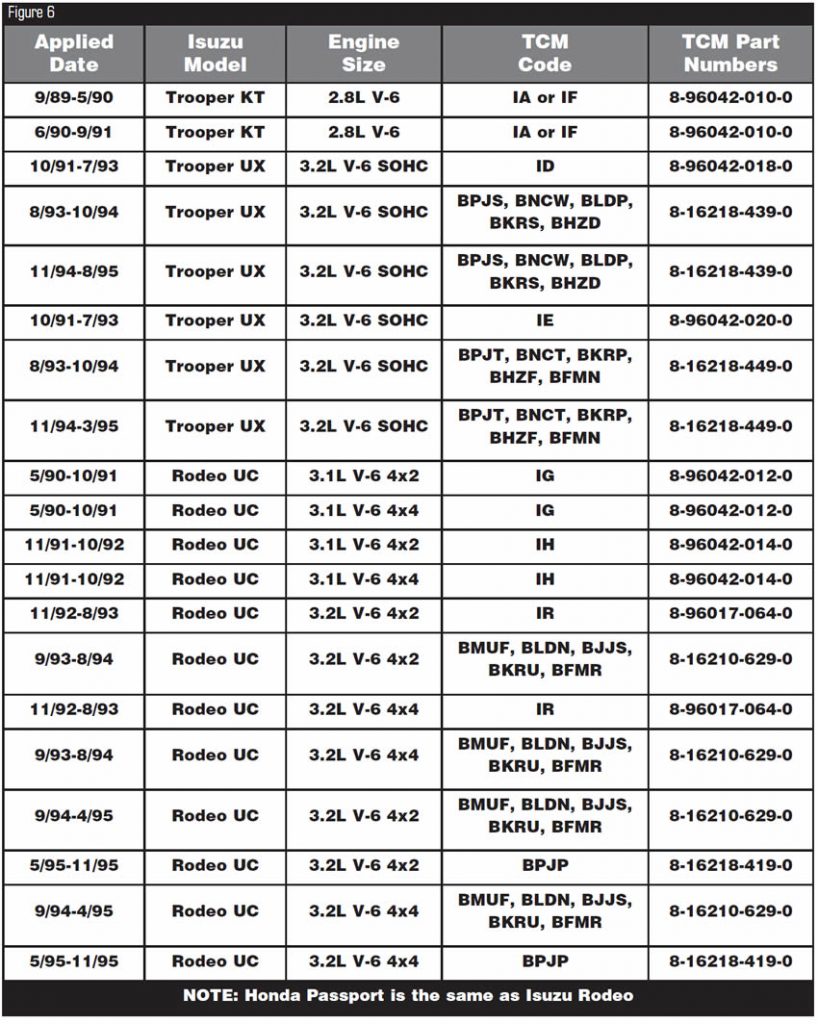
The wiring diagram in Figure 7 illustrates how the Bosch system operates. The brown/white wire at TCM terminal 54 provides ground for solenoids as soon as the ignition is turned on through the TCM internal ground relay. To energize the solenoids, the TCM provides battery voltage at terminals 43, 45 and 48 as needed.
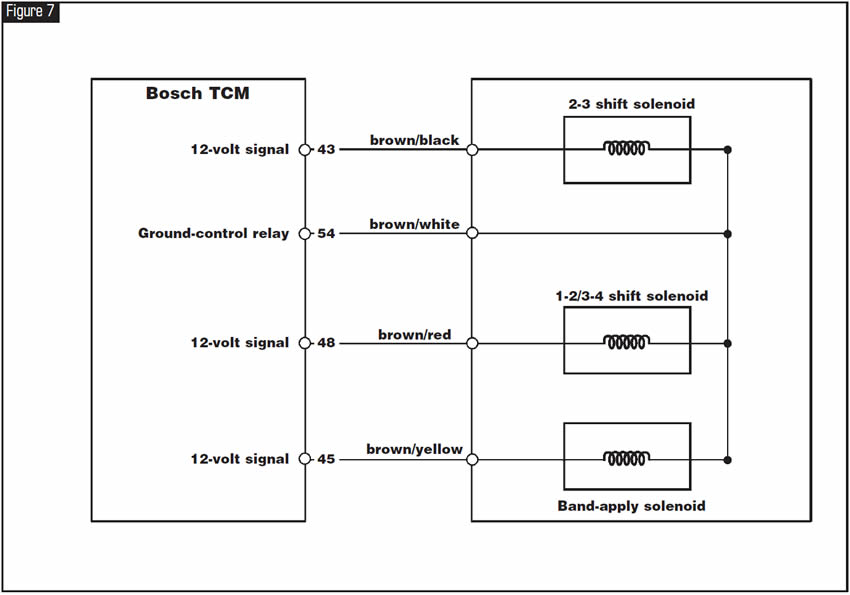
The wiring diagram in Figure 8 illustrates how the GM Delco system operates. The brown/white wire at TCM terminal C12 provides battery voltage for solenoids as soon as the ignition is turned on – exactly opposite of circuit operation with the Bosch system. To energize the solenoids, the TCM provides a ground signal at terminals A2, A3 and A9 as needed.

Although terminal locations differ between the Bosch and GM Delco systems, wire colors are the same.
Caution:
The Bosch TCM should be in 1990-93 Isuzu Trooper and Rodeo only, and the GM Delco TCM should be in 1994-95 Isuzu Trooper and Rodeo and Honda Passport. For proper diagnostic procedures, however, be certain to check which TCM is in the vehicle you are working on.


March 2006 Issue
Volume 23, No. 3
- 1996-Up Jeep, Dodge Trucks with RE Transmissions and Gas Engines: Governor-Pressure-Sensor Voltage Codes
- TCM Identification and Operation: 1990-95 Isuzu Trooper & Rodeo, 1994-95 Honda Passport














